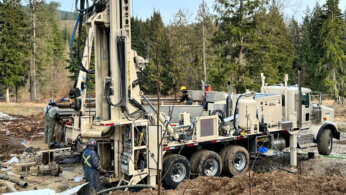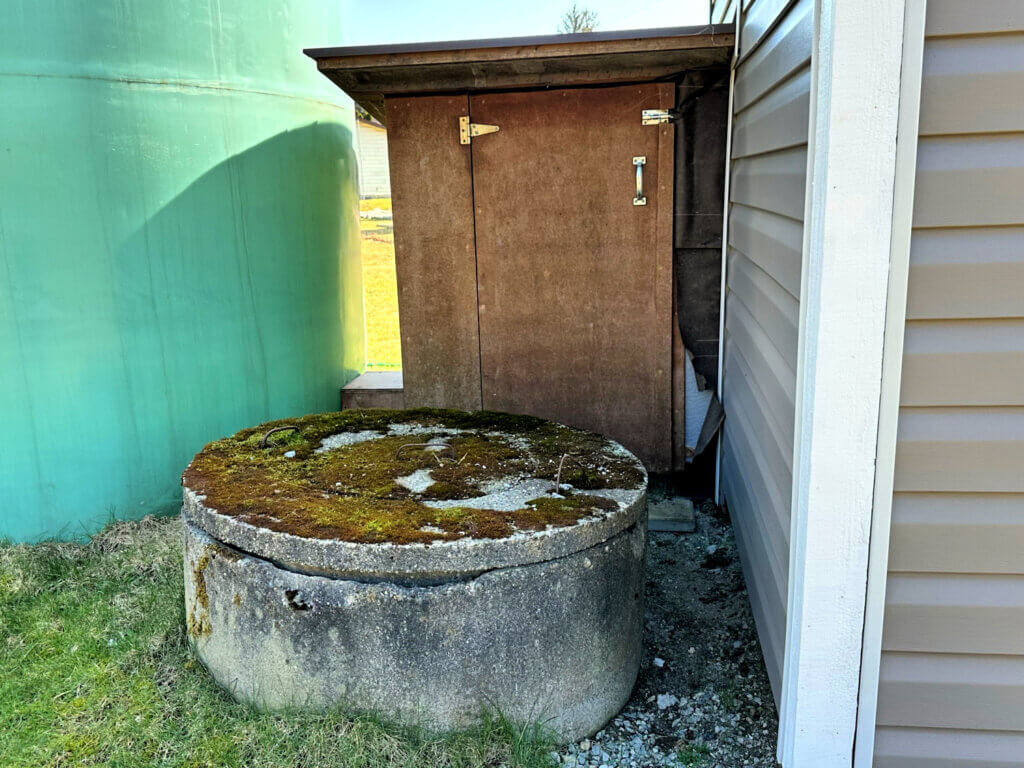
If a well has run out of water, repairing a well might be possible, depending on the cause of the issue. However, it’s important to note that there are certain situations where repairing a well may not be possible.
This comprehensive article delves into the complex issue of dry water wells, exploring the causes, consequences, and potential solutions for repairing a well that may run out of water.
Dry wells can leave property owners with no water in the house suddenly if they are unaware that their water source is drying up.
Balancing Water Well Usage: Addressing Groundwater Depletion Concerns for Indigenous Communities, Farmers, Industrial, and Recreational Users in Rural and Remote Areas
“We share more than a community we share our water”
— Colleen Roberts
Indigenous people, farmers, industrialists, and recreational users rely on water wells in rural and remote areas. Property owners are increasingly concerned about groundwater depletion and their wells running out of water.
We provide insights into the over-extraction of water, climate change, and population growth challenges based on extensive research and case studies. Additionally, we examine proactive measures, including sustainable groundwater management practices and innovative technologies, to safeguard this vital resource for future generations.
Repairing a well that has run dry can be challenging, and the best approach will depend on the reason why the water well has gone dry.


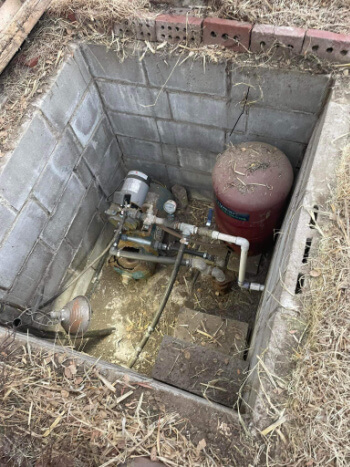
Land for Sale in Rural Areas Need Comprehensive Water Well Inspections and Water Testing
If you are purchasing land for sale, it’s important to know how a well works. New property owners can be in for a surprise, such as suddenly waking up to no water in the house! It’s not uncommon to have water well problems.
We do have a guide to purchasing land for sale in rural areas.
A thorough well inspection is strongly advised if you purchase land for sale with a water well. Water wells that run dry are often kept secret during the sale, also known as non-disclosure. Misrepresented real estate that has run out of water is a stressful and costly experience for new property owners.
Repairing a well with a history of running dry can be difficult. Water well problems should always be disclosed at the time of a sale.
Unlocking the Secrets of Groundwater:
Sustainable Solutions for Our Drying Water Wells
Groundwater is vital in providing water for various human needs, including domestic, agricultural, and industrial. While water wells serve as a means to tap into the essential water resource, they can run dry.
Drying water wells can be attributed to the groundwater levels and human actions that contribute to their depletion.
Sustainable water management methods are becoming more important to address these issues and ensure enough water for future generations.
Dwindling Water Wells: The Crucial Intersection of Climate Change, Human Impact, and Sustainable Solutions
Firstly, groundwater levels can fluctuate due to changes in precipitation patterns, recharge rates, and the geological characteristics of an area.
For example, periods of drought can decrease the recharge rate, causing a decline in groundwater levels. Aquifers with low permeability, limited storage capacity, or poor connectivity to other water may be susceptible to running dry.
Secondly, human activities play a significant role in causing water wells to run dry. Excessive groundwater extraction, driven by population growth, urbanization, and increased demand for irrigation, can lead to resource overexploitation.
This unsustainable practice often results in a continuous decline in groundwater levels, making wells more prone to drying up. Additionally, land use changes, such as deforestation and urbanization, can negatively affect groundwater recharge rates and exacerbate the issue.
When water wells run dry, they can profoundly impact the lives and emotions of those residing on the affected property.
Access to a reliable water source is a basic human need; dry water well causes stress and frustration.
In addition, property owners may be forced to find alternative sources of water, which can be difficult and expensive. Repairing a well running dry is not always the best use of money. Dry wells often force property owners to drill a new well.
Water Well Drilling & Well Repairs
“Discover lasting water solutions with our expert water well drilling and reliable well repairs, tailored to meet your needs with peace of mind ensuring your home or business flows with sustainability and efficiency near you!”.
Unlock the secret to affordable water well drilling – contact us today for a local well drilling cost estimate!
How Do Wells Work – Repairing a Well Before it Runs Dry!
You must understand how wells work to prevent them from running dry and ensure a consistent water supply.
Monitor and maintain the components of the water well regularly. Addressing water well problems such as diminishing pressure, sediment accumulation, or deteriorating well pumps is important.
Water well owners can identify potential problems early. Conduct periodic inspections and take corrective measures before significant damage occurs and costly well repairs are required.
You might notice no water pressure in the house or no water in the house suddenly. Once the well is dry, repairing a well may be challenging, depending on the situation.
In some cases, repairing a well might involve drilling or digging to reach a lower water table. The water system will require an assessment to make the best decision.
Factors Leading to the Depletion of Water Wells
The depletion of water wells can be attributed to various factors, including overpumping, drought, and population growth. Overpumping occurs when the water extraction rate exceeds the aquifer’s recharge rate. While drought and population growth in an area increase the water demand, exacerbating the problem.
Depletion of Shallow or Dug Water Wells
Water wells that are dug or shallow can run dry, although shallow wells are more susceptible to this issue. Shallow wells tap into the water table closer to the surface. Shallow wells are prone to fluctuations in groundwater levels due to climatic changes, seasonal variations, and human activities.
Dug wells are shallow, often excavated by hand, and usually less than 50 feet deep. These wells draw water from shallow aquifers, making them similarly susceptible to drying up during periods of low groundwater recharge. During droughts or heavy water use, this happens.
Warming weather can cause water wells to go dry. A shallow well is more vulnerable to running out of water early in the season than a deep-drilled well.
Shallow or dug wells are also much more susceptible to contamination.
On the other hand, drilled water wells often have access to more stable and sustainable water sources. They tap into confined aquifers, are less affected by surface conditions, and are a more reliable water supply.
Drilled wells can also run dry, even if pumped within the indicated flow rate on a drilling report. The aquifer may deplete due to excessive pumping or other factors.
But, shallow and dug wells are generally more prone to running dry than deeper wells. Water well management, sustainable water use practices, and regular monitoring can reduce the risk of dry wells regardless of depth.
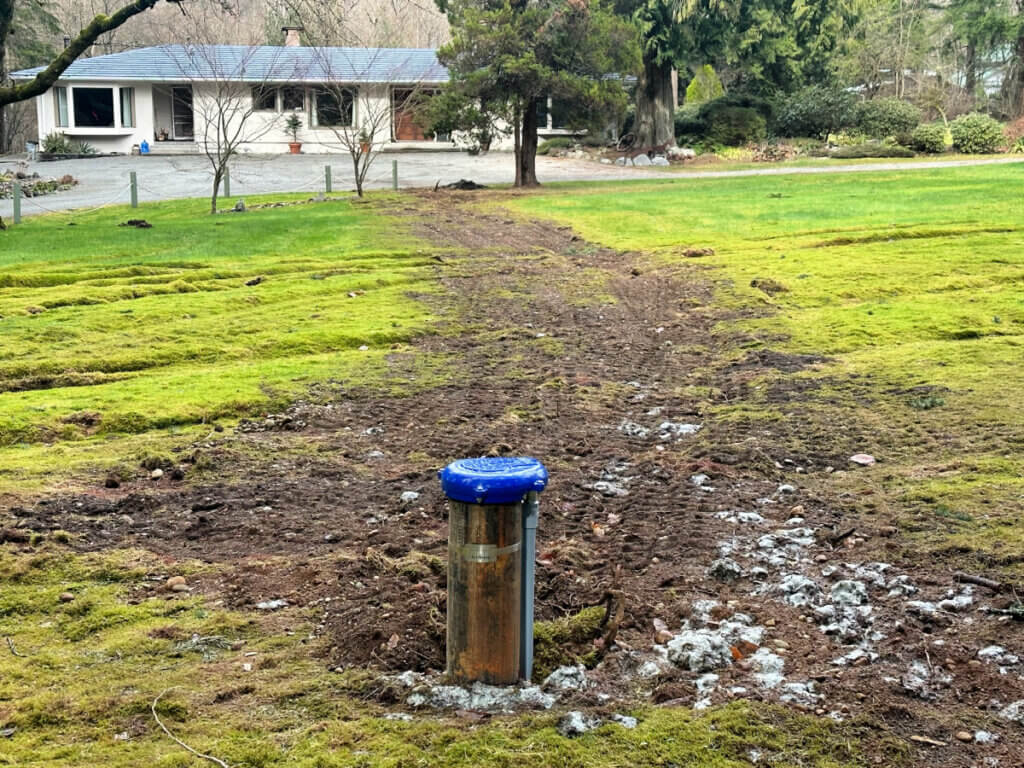
Money Spent on Repairing a Well Needs to be Carefully Considered vs. the Cost of Drilling a New Well
Repairing a well that has gone completely dry might be impossible. If you’re into the warm weather, it could be a few months before the shallow well water returns. As the water tables drop in rural areas, shallow wells are replaced with deeper-drilled wells.
You may want to consider getting an estimate for the cost to drill a well. Repairing a well should always be a wise investment, not a situation where you throw good money after bad. Remember, real estate without a viable water source is a resell issue. Legally water well problems need to be disclosed.
Extended Drought Periods
The water table can drop significantly. During drought, it’s common for water wells to run dry; the water table can drop considerably. Due to prolonged periods of insufficient rainfall, groundwater demand increases faster than recharge, resulting in depleted aquifers and dry wells.
Groundwater Depletion
Groundwater depletion is another cause of wells running out of water. Water wells run dry when excessive water is withdrawn from an aquifer without an adequate recharge. The depletion of groundwater can result in the water table dropping so the well cannot access water, leaving it dry.
A property owner may try repairing a well by trucking in bulk water and pouring it into their well. But, the water table may be so low that the costly bulk water disappears.
Seasonal Fluctuations
The water table might fluctuate depending on the seasons, with the possibility of wells running dry during drier months. Heavy rainfall and melting snowpacks during wet seasons will replenish the aquifer. At the same time, lower precipitation levels in dry seasons can lead to wells drying up.
Lowering Water Table
If the water table steadily lowers, water wells can run dry as they struggle to access the diminishing groundwater. Several factors, such as increased water consumption, land-use changes, or climate change, can contribute to this.
Water Well Interference
Occasionally, neighboring wells can cause interference with your well’s water supply. For example, a nearby well also draws water from the same aquifer. Water well interference can lead to a reduced water supply and potentially cause water wells to run dry.
Overpumping of Water Wells
Increased demand for water can lead to the overpumping of a well. Overpumping will cause a water well to run dry if the demand exceeds the aquifer’s ability to recharge. Overpumping a water well creates an imbalance, resulting in a dry well.
Repairing a Well with Aging Infrastructure
Everything has a lifespan, including water wells. The infrastructure of a water well, such as the casing and well screen, can deteriorate.
Water well deterioration can lead to a failing well. Deterioration may cause water wells to appear to be failing even when an aquifer is viable.
Clogged Well Screens in Water Wells
Water well screens can become clogged by sediment, mineral deposits, or bacterial biofilms, reducing water flow into a well. Having a fouled water well screen may not necessarily cause the well to run dry thoroughly, but it can significantly reduce the amount of water available.

“Is Your Water Well Gasping for Its Last Drop? Uncover the Telltale Signs of a Drying Water Well!”
How do you know if your well is going dry? Understanding the warning signs of a drying water well can help you take action before your well has entirely run dry. Next, we’ll cover several indicators that your well may dry up.
Before Repairing a Well, Have You Noticed Low Water Pressure in the House?
A noticeable decrease in water pressure is often one of the first signs of a drying water well. Reduced water pressure may happen when the water level in the well decreases or the water demand exceeds its ability to replenish.
Consider contacting a water well professional if a reduction in water pressure persists; keep an eye on your water pressure.
Longer Well Pump Runtimes May Indicate a Drying Water Well
If your water well pump is constantly running or takes longer to shut off, it might indicate a low water level, as the water well pump is struggling to build pressure.
A longer pump runtime could also lead to higher energy consumption, so addressing the issue is essential. If the pump operates without water, it could also damage the pump.
Are the Water Faucets Sputtering or Excessive Air Bubbles?
Sputtering faucets or air bubbles in your water are signs of air entering the water system. Bursts of air from the faucets can occur when the water level has dropped significantly in the water well, causing the pump to draw in air instead of water.
If you notice air in your water system, seek professional help to assess the condition of your water well and pressure system.
Dirty or Cloudy Water is a Sign the Well is Drying
Changes in water clarity, such as murkiness or cloudiness, can indicate a low water level in your well. Sediment and debris may be stirred-up as water levels drop, contaminating the water source. Dirty or cloudy water can present health risks, so it’s crucial to identify and address the issue.
The Most Shocking Sign of a Dry Well – No Water!”
A complete lack of water is the most apparent sign of a dry well. However, a completely dry well can occur when it can no longer replenish its water supply due to various factors such as drought, overuse, an issue in the water table, or, less commonly, a seriously deteriorated well.
If your water well runs dry, consult a water well professional for advice on possible solutions. Often water wells that were once viable water sources get to where they need to be replaced.
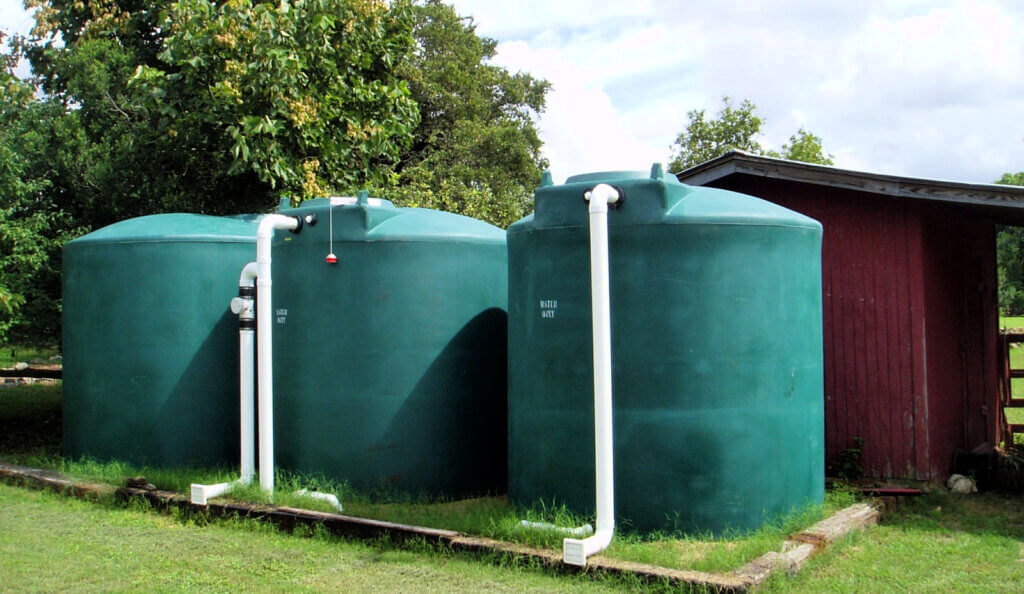
Repairing a Well: How to Prevent Water Wells from Running Dry
Water wells worldwide risk running dry due to the factors mentioned. It’s vital to prevent such incidents.
Sometimes it is possible to keep water wells sustainable and help prevent them from drying.
Proper Water Well Construction and Repairing a Well
Constructing a well correctly is crucial to its longevity and helps prevent it from drying prematurely. Ensuring appropriate depth, drilling techniques, and using the correct and quality water well materials can provide a strong foundation for a well’s long-term use.
Water Conservation Reduces the Risk of a Dry Water Well
Water conservation can help manage groundwater resources sustainably, thus reducing the risk of wells running dry. In addition, implementing water-saving techniques at home, such as using water-efficient appliances and fixing leaks, can contribute significantly to the preservation of groundwater.
Repairing a Well and Regular Water Well Maintenance is Vital
Regular water-well maintenance is crucial for ensuring the longevity and efficiency of these vital systems. By diligently following a maintenance schedule, well owners can not only prolong the lifespan of their wells but also prevent them from running dry, thus safeguarding the availability of clean water for their households or communities.
Proper maintenance involves routine inspection and testing of the water well components, such as the well’s casing, well cap, and well screen, along with the water pumping and pressure system.
Repairing a well if the actual water well appears to be damaged should be done by a qualified well driller.
Maintenance of water systems helps identify signs of wear or potential contamination, allowing for timely repairs or replacements. Additionally, periodic water quality testing is crucial for detecting harmful contaminants like bacteria, nitrates, or heavy metals.
Addressing these issues promptly can minimize the risk of waterborne illnesses. Regular water well maintenance also involves assessing the surrounding area for potential hazards, such as improper waste disposal, which may impact groundwater quality.
What is Proper Water Well Maintenance?
Finally, proper water well maintenance includes monitoring water levels and well yield to prevent the well from running dry, ensuring a reliable and sustainable water supply for the long term.
Revitalizing Your Water Supply: Expert Water Well Maintenance and Pump Repair Solutions
“Experience clean water and a reliable water well pumping system with our expert water well maintenance and pump repair solutions. 💧 Trust the professionals to protect your investment and ensure a healthy, dependable water source for years to come! 🏡✨”
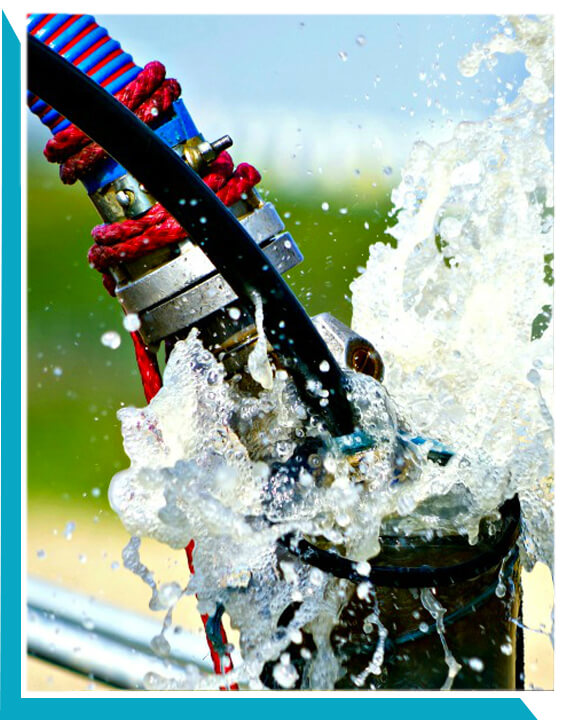
Repairing a Well – Avoid Over-pumping of Well Systems
Over-pumping can lead to the depletion of groundwater resources, resulting in wells running dry. Limiting the amount of water drawn from a well and not using it excessively can help maintain a sustainable water level within the well.
Over-pumping can also affect neighboring water systems.
Monitor Water Levels in the Well
Regularly monitoring the water levels in a well is critical for its longevity. Keeping an eye on fluctuations in water pressure or water levels can provide early indicators of the well running out of water, allowing for timely adjustments or interventions to prevent it from happening.
Consider Installing a Water Storage Tank and Repressurization System
Adding water storage tanks, such as polyethylene or cisterns, can help mitigate the risk of running out of water or repairing a well you plan on replacing.
First, having a repressurized pumping system and water storage tank will help to manage the existing available water and reduce the risk of over-pumping. Second, a water storage tank will supplement water sources during periods of low water levels or drought. Third, water storage is an excellent way of decreasing the demand on a water well to produce continuously and increases the well’s ability to recover.
Maintaining the water storage tank’s cleanliness and ensuring water purity for safe consumption by testing the water regularly is crucial. UV sterilization is strongly advised for the ongoing safety of drinking water.
Water Water Storage Tank Guide
To get a good water storage tank system, you’ll need to carefully consider several factors such as the intended use of the water, tank capacity, materials, location, and budget.
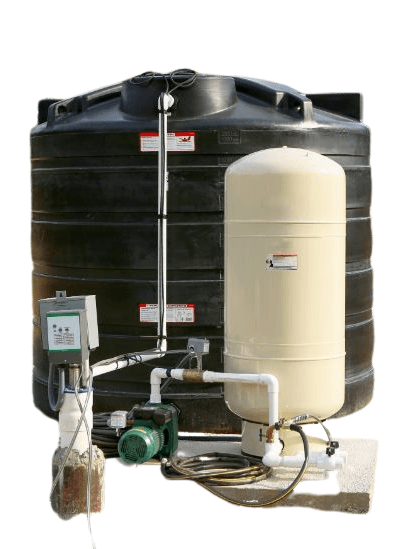
Water Well Spacing – Drilling a New Well
When drilling or digging a new water well, the adequate distance between water wells can reduce the risk of one well impacting the water level of another, thus contributing to the prevention of wells running dry and regulated water well setbacks.
Proper well-spacing and siting of new wells promote better management of groundwater resources and prevent undue stress on the water table.
Learn more about drilling a water well and site selection
The most important lesson for “local water wells that run dry” is to prioritize sustainable water management practices and community engagement to ensure long-term availability and equitable access to clean water for all.
— Science for a Changing World
Alternative Water Sources if Your Well Runs Dry
If a water well runs dry, it is crucial to consider alternative water sources to meet daily needs. The following sub-sections discuss different options to consider:
Connecting to a Neighbor for a Temporary Water Supply
If your water well has run dry or you are repairing a well and need water short term, finding an alternative water source for your home is necessary. Connecting to your neighbor’s water supply may be a temporary solution.
However, you must first obtain their permission and ensure their water supply; likely, a water well can handle the additional demand.
Here are some steps to consider.
- Speak with your neighbor: Talk with your neighbor about your situation, and ask if they would be willing to temporarily share their water supply with you. Be prepared to discuss how you can compensate your neighbor for costs.
- Check local regulations: Before connecting to the neighboring water supply, consult your local government or water utility company to ensure it is allowed in your area. There may be specific rules, permits, or fees associated with this process.
- Assess capacity and water quality: Ensure your neighbor’s water supply can handle the additional demand without stressing their well or water system. Additionally, confirm that the water quality meets appropriate drinking and household use standards.
- Hire a professional: If your neighbor agrees and you’ve determined that connecting to their water supply is feasible, hire a licensed plumber to make the necessary connections. A plumber will ensure the water connection is made correctly and safely.
Connecting to your neighbor’s water supply should be a temporary solution. Instead, it would be best to look at long-term solutions, such as drilling a new water well, connecting to a local water system, or installing a rainwater harvesting system.
Discuss your property’s best water supply options with a water expert.
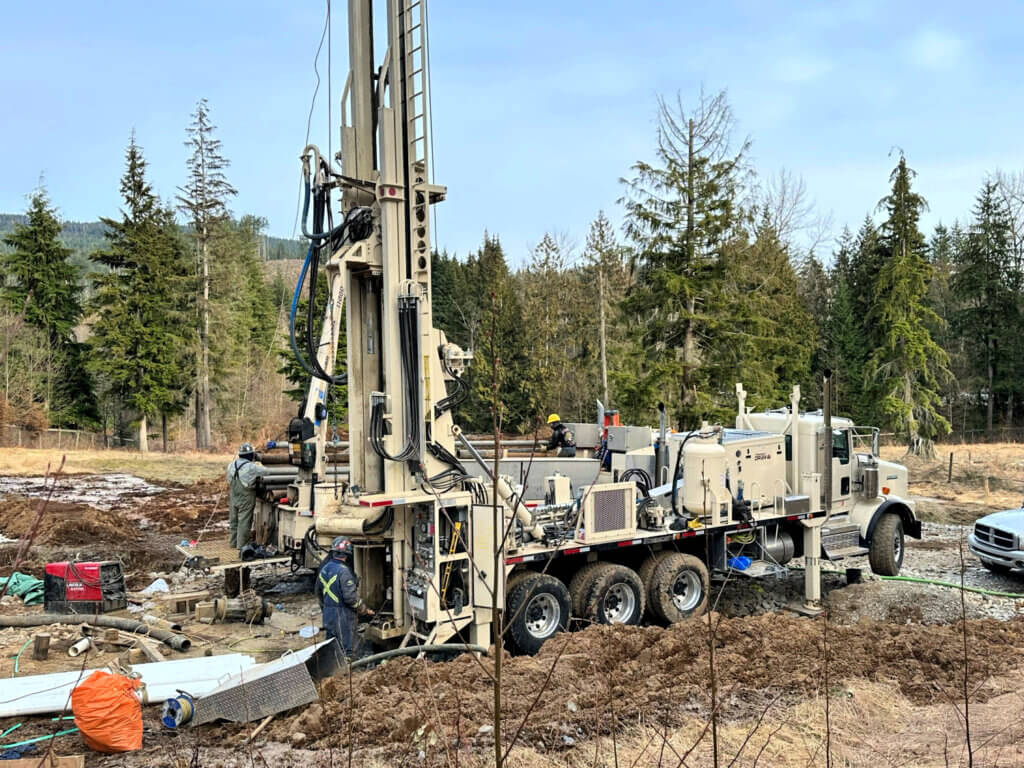
Drilling a New Water Well vs. Repairing a Well
Consider drilling a new water well if the original well has gone dry. Drilling new wells to access deeper aquifers or alternative water sources is often necessary. It is essential to consult a professional well driller to assess the site and identify the most suitable location for the new well.
Bulk Water Hauling Service
The prevalence of water hauling for dry-well properties can vary greatly depending on the region, local water availability, and seasonal weather conditions. For example, wells can run dry more frequently in areas, increasing the reliance on local bulk water hauling services.
Water hauling is essential for property owners looking for a reliable and convenient water supply for their homes, gardens, or agricultural needs.
Water hauling involves the transportation of bulk water that is clean, potable water from an approved source to a water storage tank located on your property.
Bulk water hauling services require approved tanker trucks equipped with hoses and pumps to efficiently transfer water to storage tanks.
Hauling water benefits rural properties or off-grid living situations where the water well has run dry or access to municipal water systems needs to be improved.
Owners should carefully consider the size of their storage tanks, the frequency of water deliveries, and the amount required to sustain their property so they are not running out of water between deliveries of buld water.
Hauling bulk water will guarantee a secure and adequate supply for your needs in the event of a dry well, repairing a well, or until your water source returns.
If a water storage tank is undersized, water hauling will occur more often. It’s imperative to remember that the actual cost of water hauling is in the trucking and delivery service, not so much in the price of water.
Upsizing a water storage tank system could cost less than frequently trucking water to your property or constantly running out of water.
If you have a 1000-gallon storage tank and the bulk water hauling tanker can handle 3000 gallons, you’re paying a LOT for 1000 gallons of water. It might make sense to purchase another water storage tank and plumb them together.

Self-Haul Bulk Water
You can self-haul bulk water from a filling station to your property if your well has run dry or you’re repairing a well, but you need to consider a few key factors and take some necessary steps:
- Check local regulations: Before you start, ensure you comply with local regulations and obtain the required permits. Water hauling might be restricted in some areas, so it is essential to research and follow the rules.
- Identify a water source: Find a safe and reliable water source nearby, such as a municipal water supply or another well. Make sure the water is potable and suitable for your intended use.
- Choose a suitable vehicle: You will need a vehicle capable of hauling the water you require, such as a pickup truck with a water tank or a trailer. The vehicle should be in proper condition, with adequate capacity and power to handle the load.
- Acquire a water storage tank: You will need a water storage tank or a cistern on your property to store the water you haul. Ensure the tank is clean, well-maintained, and large enough for your needs.
- Obtain appropriate equipment: You may need hoses, pumps, and fittings to transfer water from the source to your tank. Ensure you have the correct equipment to connect your water source to your storage tank.
- Consider the frequency of hauling: Depending on your water usage, you may need to haul water more or less frequently. Plan a schedule that works best for you and ensures an adequate water supply.
- Practice safe hauling: When hauling water, always prioritize safety. Secure your load, drive carefully, and be mindful of road conditions and traffic.
- Maintain water quality: To maintain the quality of the water you haul, regularly clean and inspect your storage tank and equipment. It’s also wise to periodically test the water for contamination, such as coliforms.
Self-hauling Bulk Water Often Becomes a Relentless Chore
While self-hauling bulk water can be a viable option, it’s essential to consider the associated costs, time, and effort involved. Suppose your well has run dry or you are repairing a well. In that case, it may be worth exploring alternative solutions, such as drilling a new well or connecting to a municipal water supply if available in your area.
Rainwater Harvesting
Rainwater harvesting is a sustainable and environmentally friendly method for collecting and using rainwater. It reduces dependence on an overused or intermittent groundwater supply.
Installing a rainwater harvesting system involves collecting rain from rooftops, filtering it, and storing it in tanks for future use.
It is possible to use rainwater for irrigation, flushing toilets, washing clothes, and other non-potable purposes. Proper rainwater filtration and disinfection can make water from these systems safe to drink.
Running Out of Water – Water Recycling Options
Water recycling can help offset the use of groundwater by reusing treated wastewater. Various treatment processes are available to ensure the recycled water is safe for its intended use.
Conclusion: Importance of Sustainable Groundwater Management
Understanding the causes of water wells running dry and implementing sustainable groundwater management practices is essential for ensuring access to clean and reliable water sources.
The long-term viability of our water wells depends on collaborative efforts by governments, communities, and individuals to conserve and manage this precious resource.
It is critical to ensure that future generations have access to the same or better water resources than we have today. By taking proactive measures to prevent water well depletion, we can safeguard our groundwater for future generations.
Links for Water Wells & Water Quality USA and Canada
Home Drinking Water Fact Sheet
Learn About Private Water Wells
Canadian Drinking Water Guidelines
EPA Drinking Water Regulations
USDA – Install or Repair a Well

Get a monthly update of our most popular articles directly to your inbox such as Water Well Advice including Water Testing, Well Drilling... what you need to know when buying or selling Real Estate with Water Wells, Septic Systems & many other rural living topics!




